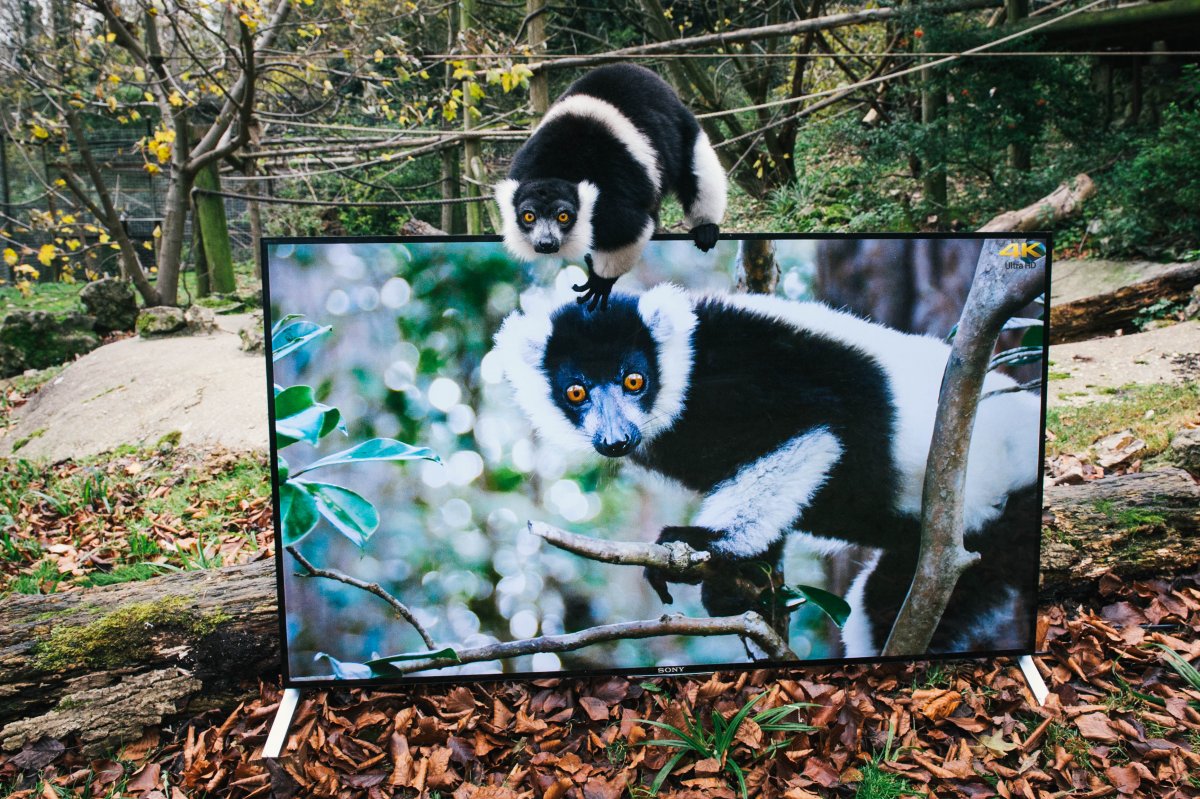
The Port Lympne Reserve’s langurs and lemurs are ringing in the New Year like many of us—binging on nature documentaries. As part of the reserve’s ‘Back to the Wild’ project, aiming to return animals born in parks across Europe to their native homes, the primate staff have installed brand-spanking new and state of the art Sony 4K Ultra HD televisions, allowing their primates to watch footage of release destinations in Indonesia and Madagascar.
Simon Jeffery, Animal Manager and Head of the Primate section at Port Lympne, wrote that they’re constantly looking for new engagement activities for their animals, in this case, something from their usual environments too hard to recreate in captivity.
‘While our large enclosures are designed to resemble the animals’ natural habitat as closely as possible, we decided to give our langurs and lemurs an actual peek of areas in the wild that could, potentially, become their new homes,’ writes Jeffery. ‘Sony’s Bravia 4K TV picture quality is so clear and detailed that it’s as close to seeing the rainforest with your own eyes.’
Jeffery adds the televisions are on trial, part of efforts towards creating the ultimate reintroduction routine. Though the reserve’s aided in the successful send off of quite a few langurs to East and West Java, no lemurs have had such luck just yet. But 2016 may be the primates’ year—at least on the reserve. There are plans to release a group of lemurs on their native island home—Madagascar—before the year’s out, though a timeline hasn’t been nailed down just yet.
‘Although we have been working closely with local communities in Madagascar for some time, we haven’t yet introduced captive born lemurs from the parks to this unique island,’ writes Jeffery. ‘Our surveys and ground work have been very successful and we’re really excited to start exploring the possibility of sending captive born lemurs back to the wild, where they belong.’
The reserve’s work is supported by The Aspinall Foundation, a registered conservation charity that also sponsors Port Lympne’s sister park in Kent, Howletts Wild Animal Park. Jeffery explains that what began as the dream of founder John Aspinall in the 1970s—to release gorillas bred at the foundation’s parks in the wild—has also become the mission of his son, current chairman Damian Aspinall.
While Howletts’ boasts about 50 species and 400 residents, Port Lympne is simply massive, holding 88 species and over 700 animals on 600 plus acres. The parks aim to both breed endangered and threatened animals and return suitable residents to the wild. Being born abroad, many residents need to go back to school so to speak— reminded, or maybe been even taught, what to expect in their new native homes. That’s why efforts like the recent Sony instalments are so important, aside from offering the insatiably curious species a pleasant distraction.
Given the foundations’ track record, it’s very likely we’ll hear good lemur and langur news some point this year. Jeffery writes so far the reserve and its sister park have facilitated the homecoming of five black rhinos, nine grizzled leaf monkeys and Javan langurs, 22 Western lowland gorillas, three European bison and one gibbon.
So if you’re looking for a bit of a wild start to the year, consider heading to Kent. Who knows? You might just wind up watching your favourite nature show alongside an audience of super-cute and endangered primates.


